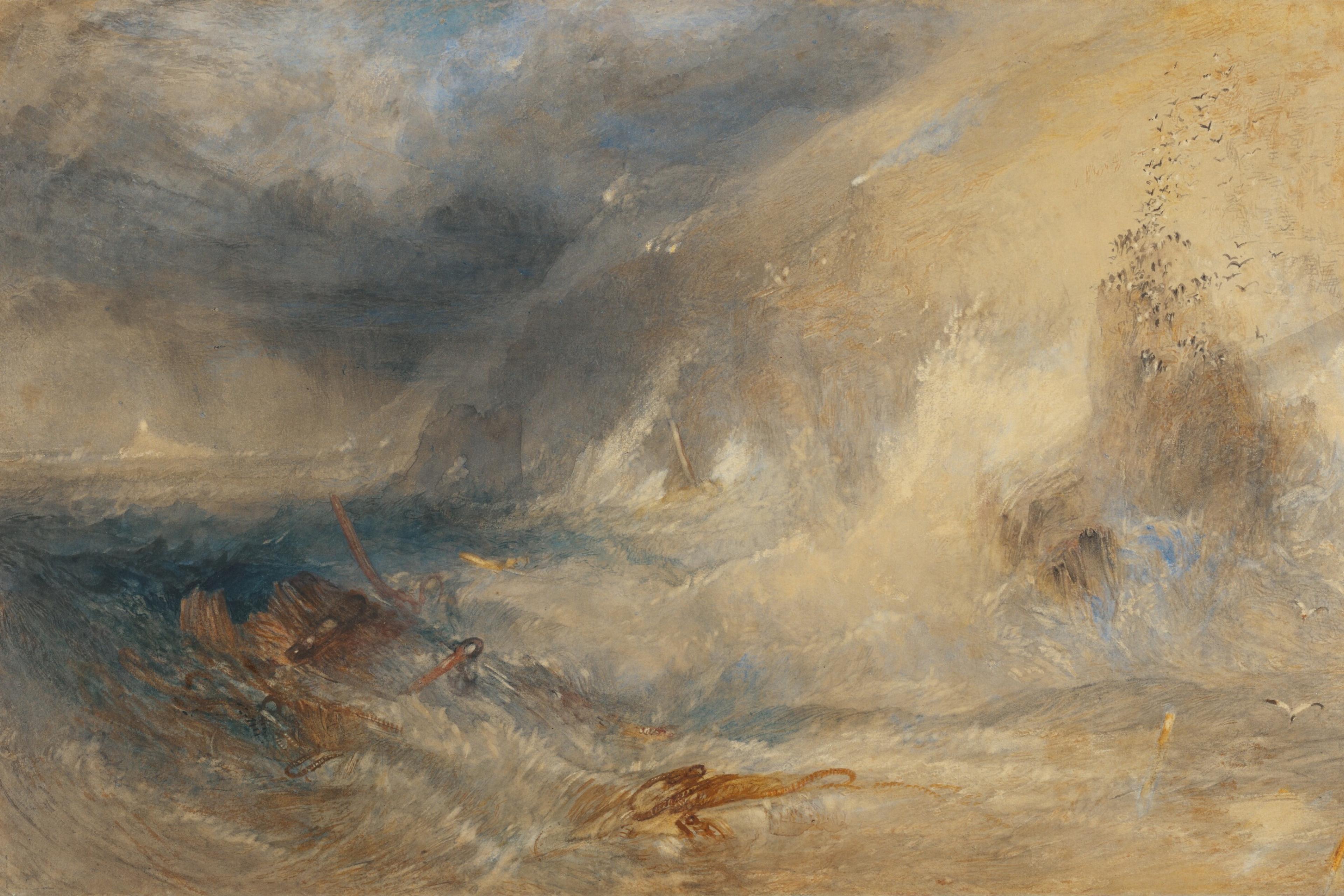When we tell our stories, we often focus on the tectonic events that have structured the landscape of our lives. We might recall the moment we met our future partner and fell in love at first sight; the time we were utterly broken by the unexpected death of a loved one; or a moment of spiritual awakening or enlightenment. These experiences are so profound that they change us forever. They shake the very foundations of our belief and value systems, altering both the world we inhabit and who we take ourselves to be. In the aftermath, nothing is the same.
We tend to think of major personal transformations as big, loud and sudden. We imagine an explosion of fireworks or, conversely, an earthquake that brings everything crashing down. But personal transformations don’t always follow a ‘bang’. Sometimes they build from a whisper.
As a philosopher of mind, I think the key ingredients of personal transformation are not always found in tectonic events. Drawing from research on consciousness in sleep, dreaming and mind-wandering, I believe that the landscape of our lives can be changed in much more subtle and gradual ways. This type of change can easily be overlooked when we focus on fireworks or earthquakes. Yet the ingredients of personal transformation are in each of us, right now, in the incessant whispers in our stream of consciousness.
We all have a near-constant flow of thoughts and images that runs through our minds by day and night, channelling our decisions, actions and emotions. Though we can focus our attention and deliberately think through a particular problem, many of the thoughts and images in our stream of consciousness happen spontaneously without intention or reflection. They bubble up and disappear seemingly on their own and, if we become aware of them at all, we often forget about them immediately afterwards. Though inconspicuous and elusive, these spontaneous thoughts and images form a near-constant backdrop to our conscious lives; they are the whispers in our stream of consciousness.
Because of their elusiveness, these thoughts are not the same as the experiences and events we typically associate with large-scale personal transformation. But just as a trickle of water can, over time, cut deep gorges into a landscape, so too can the whispers of spontaneous thoughts scale up to larger changes. To understand the transformative potential of our stream of consciousness, I suggest we look in places where these ‘whispers’ are least suppressed: our dreams and daydreams.
Research on mind-wandering shows that thoughts and attention are in constant flux. They’re always flitting about, drifting from the here and now. This constant fluidity can override our attempts to focus on what we are doing: estimates suggest that healthy adults spend up to 50 per cent of waking life mind-wandering. When our minds wander, we step back from ongoing events, reassess what has just happened, and imagine alternative possibilities for what we might do next. This can range from the quotidian (What should I make for dinner?) to the whimsical (What would it be like to live in a campervan for a year?).
Sleep also teems with conscious thoughts and experiences that can be equally, if not more, quotidian or whimsical. Vivid and emotionally intense dreams as well as isolated images, thoughts and residual bodily perceptions occur in all stages of sleep. Though sleep involves periods of unconsciousness, it is not a period of silence, but of rich conscious activity and constant flux, like mind-wandering.
Though sleep and wakefulness have traditionally been considered opposites and mutually exclusive states, it seems increasingly plausible that wakeful mind-wandering and dreaming in sleep are similar in phenomenology and neurophysiology. It has even been proposed that dreaming is an intensified version of waking mind-wandering. Both occur spontaneously, largely outside of awareness and beyond the reach of deliberate control. In fact, our daydreams might involve a form of dreaming while awake, and part of the brain may be in a sleep-like state during mind-wandering.
Studying both the occurrence and content of dreams and daydreams can, I believe, shed light on the ingredients of mental autonomy, which is the ability to take control of your mental life and quite literally change your mind. Two key ingredients of mental autonomy are freedom from immediacy and freedom from repetition. These are at work in large-scale personal transformations, but also in our stream of consciousness, which is how whispers can become transformative.
Freedom from immediacy is freedom from the demands of the here and now. Especially during rapid eye movement (REM) sleep, which is often associated with vivid dreaming, we are decoupled from our environment; this is due to so-called sensory input and motor output blockades. Although we can be awakened by loud sounds and occasionally incorporate them in our dreams, our dreams unfold largely independently of environmental stimuli. At the same time, our sleeping bodies are virtually paralysed, which is why we don’t normally act out dream movements, but stay still in bed.
Mind-wandering is characterised by similar, but less extreme detachment. In laboratory experiments, mind-wandering is often defined as ‘task-unrelated’ or ‘stimulus-independent’ thought. From this perspective, mind-wandering is what we are doing when we are no longer performing a specific task or reacting to events in our environment.
Freedom from the ‘immediacy’ of environmental demands, tasks or deliberate control is what makes dreaming and mind-wandering spontaneous and unconstrained. This lack of constraints also affords a freedom to imagine ourselves in different situations or scenarios. This freedom to detach – to turn away from the here and now – allows us to choose whether we want to engage with what is happening around us or spend our cognitive resources on something else. This brings us into the realm of a more deliberate form of mental autonomy, where we can reflectively choose to change our thoughts and actions.
Mental autonomy also requires freedom from repetition. Aside from freeing ourselves from the demands of what is happening here and now, we can also free ourselves from the past, from our own history and cognitive habits. In mind-wandering and dreams, this is expressed as freedom from thinking the same thought again and again. And like freedom from immediacy, freedom from repetition is also an opportunity. It is a freedom to do things differently, to see things from a different perspective or even create something new.
In sleep, freedom from repetition is expressed in the novelty and bizarreness of our dreams. Dreams feed on waking memories, but they rarely replay past experiences exactly. Instead, dreams combine past experiences from different points in our lives, fusing persons or places we have encountered in real life into something new. The weird and fantastic content of our dreams often seems random rather than useful but can sometimes inspire real insight. Similarly, the associative train of thoughts and images that is the fabric of our daydreams often seems erratic, but sometimes allows us to hit upon a solution to a problem in a new and creative way. The key word here is ‘allows’; at best, our dreams and daydreams make offerings, which we can then choose to follow – or not.
Years ago, I dreamt I was going for a walk with my partner and our small children. Though I was a single, childless woman with no wish or intention of ever having children, I dreamt I was a father. In the dream, I was not aware of the strangeness of this situation. I had naturally and effortlessly slipped into a different identity. I remember waking up with a very clear impression of just having been another person. I found this amusing, but it certainly didn’t change my mind about my identity or family planning. I am also convinced that this dream had nothing to do with my (much later) decision to have children; I would say that resulted from a mixture of tectonic events and a subsequent stream of whispers. But at that point in my life, the dream piqued my curiosity because of my research on dreaming and the self, and because in it ‘I’ was a completely different person. This is an example of how freedom from immediacy and repetition can enable dreams to make an offering: they can be a source of insight and transformation, but it’s your choice. In this case, the dream’s transformative potential remained unactualised.
Though potentially transformative experiences and ideas can occur in dreams and mind-wandering, the process of evaluation and endorsement – what value (if any) we place on these offerings, and whether we choose to act upon them and make them part of our life story – happens in a more focused state of wakefulness. The same is true for deeper and lasting transformations from so-called awakening or enlightenment experiences: they also need to be cultivated, reflected upon, and assessed.
The detachment and innovation that I believe is linked to the transformative potential of dreaming and mind-wandering can also have costs, especially in the short term. Performance on attention-demanding tasks, such as driving or reading, is compromised during mind-wandering; and the same is obviously true if you fall asleep at the wrong time and in the wrong place. The potential benefits of dreaming and mind-wandering can also break down. When ruminating, our thoughts no longer move freely, but in circles. Likewise, recurrent dreams can force us to relive waking experiences again and again, which can be a source of suffering for survivors of traumatic events.
Overall, the costs and benefits of mind-wandering, as well as the functions (if any) of dreaming, are insufficiently understood. If we tried to fully harness these states, to control or optimise them, they might lose the unconstrained and freely flowing quality that is at the heart of spontaneous thinking.
Even in the vast majority of inconsequential, barely noticed and immediately forgotten dreams and daydreams, we can find – if we look closely – key ingredients that are also at work in larger-scale personal transformations. Moreover, because these ingredients are part of our spontaneous dreams and daydreams, the whispers of our stream of consciousness have transformative potential that can scale up. By providing a transient glimpse of an alternative self and world, they can sometimes prompt an enduring change in perspective.
And even when personal transformation follows a ‘bang’, it is worth considering the surrounding whispers and ripples in our stream of consciousness. After everything comes crashing down, how we come to live with and adapt to such sudden change is a long-term process that unfolds within a broader context. Our dreams and daydreams are part of this context, and paying attention to them can help us learn about our personal lives, our concerns, wishes and emotions, as well as provide broader theoretical insights into the nature and workings of our minds. There is nothing mystical about the idea that this process of reflection can transform, across different levels, our self-image.
In what is described as the first naturalistic theory of dreams, Aristotle noted that, like a reflection in a pool of water, the clearest dreams appear in the still of the night, when sleep is calm and undisturbed. Likewise, the constant whispers in our stream of consciousness are heard most clearly when our minds turn away from the world and are left to their own devices, as in wakeful mind-wandering and dreaming during sleep. Sometimes, these constant but barely audible murmurs may even be a first step towards larger-scale and long-lasting personal transformation, and towards understanding how such transformation takes place. And, at other times, they’re just dreams.
This Idea is part of a series on contemplation produced with the Monash Centre for Consciousness and Contemplative Studies. To read other articles in this series, see Kevin Berryman’s Idea on awakening experiences.








